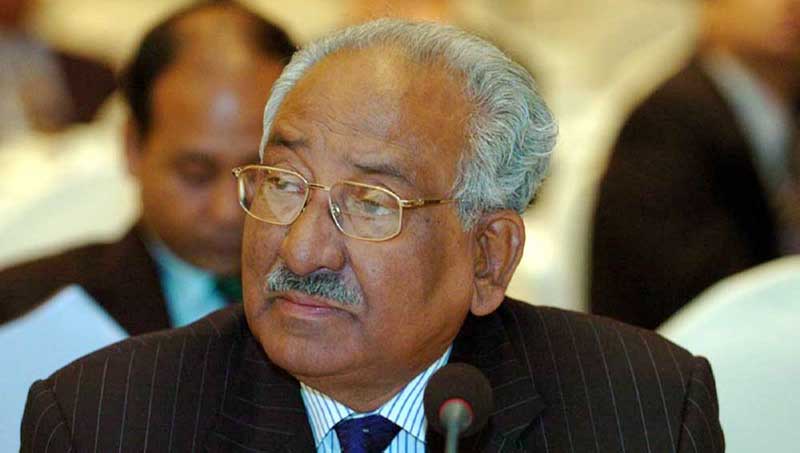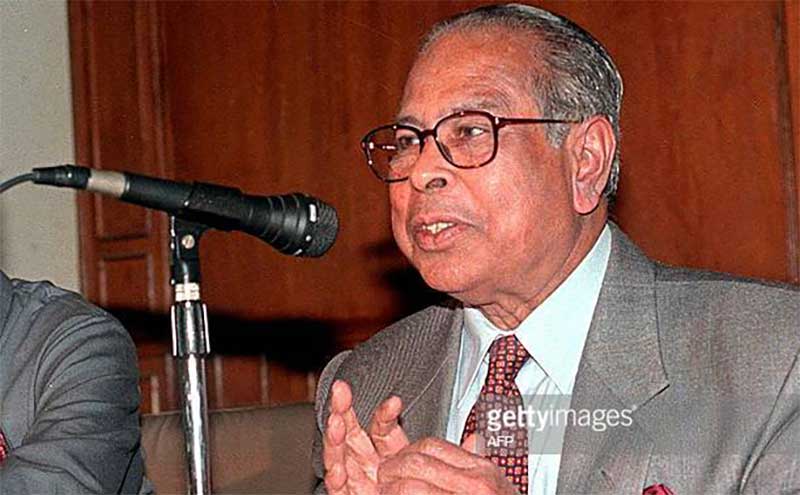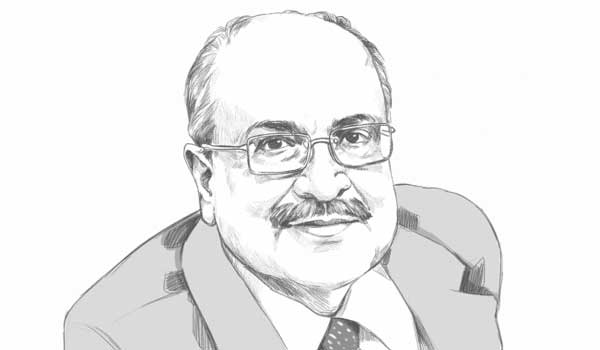Originally posted in The Business Standard on 3 June 2021
Being engaged in appraising the national budgets in Bangladesh for more than three decades has given me the opportunity to observe its evolution over the period. These observed changes include the metamorphosis of the process in terms of its, among other things, underlying philosophy, structure and size, allocative priorities and implementation mechanism. One has also noted the changes taking place in the milieu within which the annual budget of the government is presented and discussed.
Today I selectively recall a number of those experiences – not necessarily in a chronological order.
Political philosophy and budgetary initiatives
It is widely held that the national budget is one of the main vehicles to give shape to electoral promises of the regime.
During the tenure (1996-2001) of the late lamented finance minister Mr Shah AMS Kibria, sometime before the declaration of the budget for the fiscal year 1997-98, the then finance secretary Zakir Ahmed Khan invited me to his office one afternoon. He indicated that, as an expression of its commitment towards building a welfare state, the Awami League government wants to initiate some social protection schemes for the poorer sections of the society.
We readily agreed that the launch of a safety net programme for the income-poor and socially disadvantaged women, even on a limited scale, will have a great signalling effect. Indeed, that was the genesis of the now ever-expanding programmes dedicated to distribution of financial allowances to the vulnerable sections of our society. This initiative was different in its essence, design and delivery from the traditional Test Relief or Food for Works programmes.

One may also recall that in 1998, over 75% of the country was flooded, including half of Dhaka. Mr Kibria called me one day to discuss what economic measures could be undertaken to help the people affected by the deluge.
As the annual budget was already announced, we agreed that monetary actions may be put in use to support the fiscal measures. It did not need any convincing for the finance minister to settle for infusion of a large amount of liquidity in the economy to prop up the aggregate demand. To reach out to the rural poor, particularly the marginal farmers, the minister decided to use (to a great success) the Krishi Bank as the conduit.
Reflecting on the current pandemic situation, it seems like that was possibly the beginning of our experience with stimulus packages in Bangladesh.
The lesson is simple – if the political masters and policymakers can articulate their political objectives, practising economists usually can find an instrument to achieve them.

Reforms and the budget
What is important to note is that most of our enlightened finance ministers have undertaken serious structural and policy reforms to complement their budgetary ambitions. Let me recall here two such measures from history which have had far-reaching consequences for our economic development.
The first was the introduction of the Value Added Tax (VAT) in July 1991 and the other was the launch of the flexible exchange rate system for Bangladesh Taka in after 2001. Both these major reforms happened under the leadership of Mr M Saifur Rahman – who also left us under tragic circumstances – in his two different tenures.
Agreeing with the need for the introduction of VAT and launching of flexible exchange rate systems, many of us were sceptical at the time regarding the state of institutional preparation for such bold steps. Indeed, the finance minister himself participated in many of the open debates concerning the proposed measures. Yet, Mr Saifur Rahman went ahead with these reforms and looking back it seems that he was right.
Regarding the contribution of Mr Saifur Rahman in pursuing reform initiatives for enabling achievement of the budgetary targets, one needs to recall the constitution of the Banking Reform Committee, which was chaired by Professor Wahiduddin Mahmud and where I had been a member.
Recommendations of this committee were instrumental in improving the corporate governance in the private banks and strengthening the coherence between fiscal and monetary policies. Regrettably, a number of the achievements have been undone recently through dilution of the restriction on the number of family members in the bank board and their tenure.
Unpacking of the budget
In our budgetary discourse, one issue which has come up periodically relates to the possible unification of the Revenue Budget and the Development Budget. As we know, this continues to remain a moot issue till today.
However, in the recent decade, we have seen attempts to introduce provisions to endow more transparency to the resource allocation process of the budget. These attempts relate to the introduction of Gender Budget (2009-10), District Budget (2010-11), and Children Budget (2015-16). All these three structural innovations happened during the recent two tenures of Mr AMA Muhith. However, the value of these promising initiatives remains suspect.
The budget for the fiscal year 2009-10 presented the first gender budget of the government based allocations for four ministries. By 2016-17, its coverage was expanded to 43 public agencies. However, mechanical aggregation of allocations of some concerned ministries, lack of gender disaggregated data and absence of a result-based assessment framework inhibited this most promising budgetary undertaking.
The Children Budget came in 2015-16. This much appreciated initiative also could not make much headway due to conceptual challenges, data deficit and assessment framework. In the budget for 2019-20, the present finance minister opted not to present any Children Budget
The exercise of producing the District Budget possibly had the most frustrating outcome. The concept of the District Budget was introduced through the budget for fiscal year 2010-11 and was to be piloted for the Tangail district. Five more districts were later brought under the initiative. Then the whole initiative, epitomising devolution of financial power to local government, vanished in the oblivion without any announcement after the fiscal year 2014-15.
This is possibly an instance which reveals that progressive budgetary initiatives without concomitant structural reforms – in this case decentralisation of relevant power and building necessary capacity of local government – have little chance to succeed.
Integrity of the numbers and transparency
I must attest that both Mr Saifur Rahman and Mr Shah AMS Kibria attached high importance to the integrity of budgetary figures as well as to their transparent presentation. I readily remember when on a number of occasions, Kibria Shaheb called me up to seek clarity regarding the numbers cited by me to the press while criticising certain government policies.
And Mr Saifur Rahman, taking note of our data critique, invited the whole CPD team to his office in January 2005 and took to task the officials from the Bangladesh Bureau of Statistics (BBS) in front of us. We were quite impressed by the minister’s approach as, instead of being defensive, he leveraged independent critique to commit his officials to generating better data.
I have another fond personal experience regarding the improvement of budgetary transparency. In the 1990s, fiscal deficit was usually not accounted for in the fiscal framework. As a result, the finance minister, while reporting on budget implementation status, was subject to criticism for the borrowing made to underwrite the budget deficit.
So, once I suggested to Mr Kibria that he could make the borrowing a programmed variable and include it in the fiscal framework. It was in the fiscal year 1997-98 that possibly for the first time, Tk3,000 crore borrowing was programmed to finance the fiscal deficit.
Budgetary transparency has significantly deteriorated since those days. For example, Mr Saifur Rahman, while presenting his annual tax collection target, would always put up a summary assessment. This assessment would lay out the sources of proposed additional tax collection in terms of those attributable to new measures, net outcome of rationalisation of old taxes and tariffs, generation through improvement of institutional efficiency. This approach was abandoned during Mr Muhith’s period and was not picked up by the incumbent.
The data deficit regarding budget has progressively increased and one of the contributing factors is the data discrepancy among figures produced by various public agencies.
Role of the economists
Mr Kibria was possibly the first finance minister who constituted a macro-economic advisory group with a limited number of ranked economists. I had been a member of that group. The whole group’s interaction with the minister had been very professional and interactive.
Unfortunately, over time, the interaction between the economist community and the finance minister has become episodic and seasonal. For example, the pre-budget discussion has gradually become a public relation exercise with very little professional substance. Serial discussions take place without any record and with no follow-up mechanism.
Indeed, for many of us, these pre-budget meetings of the economists with the finance minister have largely lost their professional attraction.
Moreover, categorisation of the economists in terms of “liked” and “unliked” ones have also deprived the government of candid evidence-based policy advice. Indeed, the political appetite for facts-driven constructive criticism has diminished discernibly. A closer look into the system would reveal that the lacuna created by the marginalisation of the national experts in providing structured economic policy advice has been largely paralleled by growing influence of the inputs coming from the bureaucrats, often with political ambitions.
Parting thoughts. A lot of changes have taken place around the national budget process in the last three decades – some are encouraging, some are not. Whatsoever, the observed development achievements of Bangladesh have a lot to do with the growing maturity of our budgetary exercises, improved understanding of our media and strengthened sensibilities of our citizens.
To take the country to the next stage, a number of reforms are due for improving the budget preparation, presentation and evaluation as well as data generation related activities. The practising economists have a duty to lay out that pathway towards those necessary changes.
Dr Debapriya Bhattacharya, Distinguished Fellow, Centre for Policy Dialogue (CPD)




